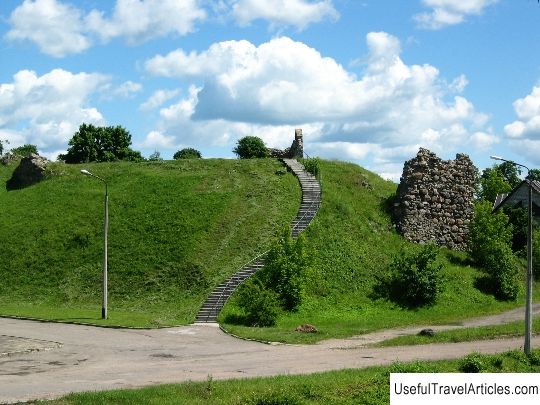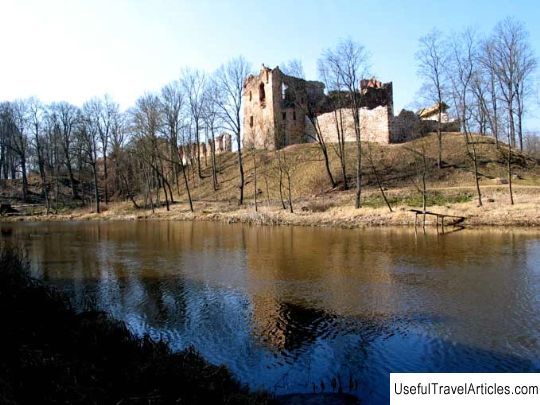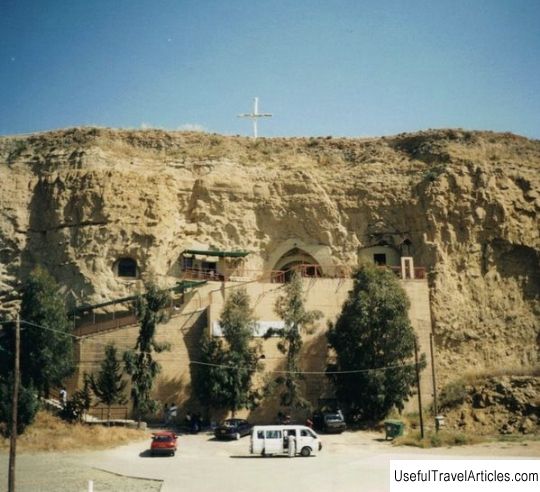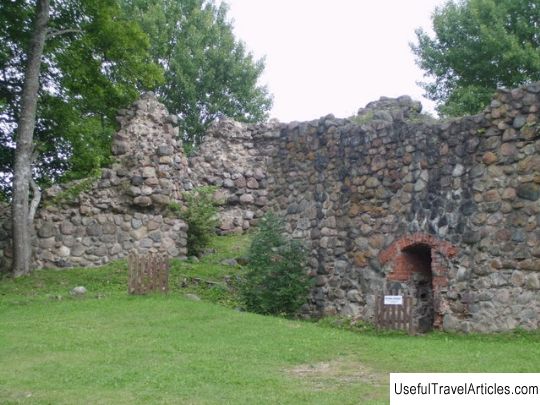Dinaburgas pilsdrupas description and photos - Latvia: Daugavpils
Rating: 8,2/10 (100 votes) 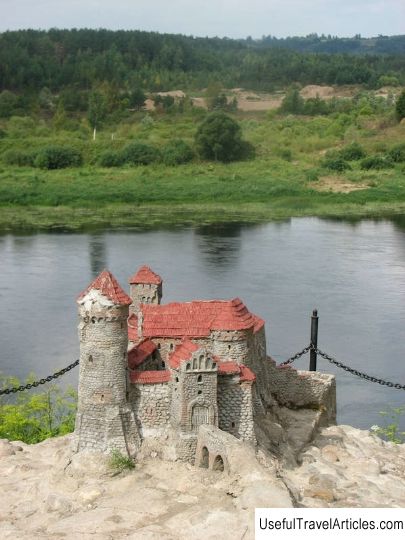
Dinaburgas pilsdrupas description and photos - Latvia: Daugavpils. Detailed information about the attraction. Description, photographs and a map showing the nearest significant objects. The name in English is Dinaburgas pilsdrupas. Photo and descriptionAccording to historical chronicles, the Dinaburg castle was founded in 1275 by the master of the Livonian Order Ernst von Ratzeburg. There were repeated battles for the castle, and it ended up in the hands of the Russians, the Lithuanians, or the Polish troops. In 1656, the Dinaburgskaya fortress was captured by Russian troops, but four years later, according to the Oliwa treatise, the city became the property of Poland. The walls of the fortress were gradually dismantled for the construction of new fortifications. In 1772, Dinaburg was annexed to Russia, which, to protect the southwestern side of St. Petersburg, began to build a castle on the banks of the Daugava. The Russian architect V.P. Stasov participated in the creation of the project. New fortifications have been under construction for 20 years. The fortress in the form in which we see it today, already the fourth in the history of Daugavpils. The fortress began to be built in 1810. The stones for the construction of the ramparts were brought from the island of Saaremaa. As a result, the height of the built ramparts reached 11 meters, along them a moat was dug, the depth of which reached 9 meters. The moat was filled with water. The work was carried out quickly and efficiently. In the spring of 1812, even though only half of all the work was completed, the tsar recognized Dinaburg as a first-class fortress. In the summer of 1812, Napoleon's troops approached the Dinaburg fortress, and for three days they tried to capture it. However, despite the fact that the number of invaders outnumbered the Russian defenders of the fortress by ten times, it was not possible to take the fortress by storm. In the second half of July, the defenders had to leave the fortress, in connection with the receipt of the order to retreat. As a result, the Dinaburgskaya fortress was occupied without a fight by the troops of General Rikord, who ordered the destruction of the started buildings and demolition of the fortifications. In 1813, the construction of the fortress was resumed again. Before the arrival of troops in the fortress, construction work was carried out by prisoners, day laborers, as well as more than 2,000 French prisoners. Many of them died then from illness and exhausting labor. Great damage to the built fortress was caused by floods in 1816 and 1829. In the period from 1816 to 1830. barracks were built on the territory of the fortress. Residential buildings. Fortress gates, etc. The dimensions of the erected Dinaburg fortress made it one of the largest and most powerful of that time. In 1819, the strength test of the wall of the main shaft was carried out. For this, from a distance of 140 meters of large caliber, 14 shots were fired at the same place. The wall was checked, the damage was purely external. The fortress was equipped with 4 fortress gates. Icons hung above them, which were illuminated by lanterns at night. Members of the imperial family often stayed in the Dinaburg fortress. So. Nicholas I himself visited here 13 times in five years. The construction of the hospital in the fortress was completed in 1827. It was designed for 500 people. For heating and ventilation, the hollow walls of the building were used in a unique way. The constructed dam erected between the fortress and the Daugava became a useful structure. The six-kilometer dam has repeatedly rescued Dinaburg from flooding. Improvement and arrangement of the fortress took place over decades. So Nicholas I remarked with irony: “The Dinaburg fortress has been under construction for 31 years already. I would like it to be completed during my lifetime. But I’m unlikely to live up to that. ” And he was not wrong. The fortification was built for another 27 years. Only in 1878, the creation of the Dinaburgsky defensive complex was finally completed. The Dinaburgsky fortress was not only a defensive structure. But also a place where political prisoners are kept. So, after the December Uprising of 1825, V.K. Kuchelbecker, who was a friend of Pushkin, was brought here. He was sentenced to death, which was commuted to life imprisonment. Later, another prisoner, N.A. Morozov, one of the participants in the assassination attempt on Tsar Alexander II, served his sentence here. By the end of the 19th century, the Dinaburgskaya fortress, which at that time was called Dvinskaya, lost its defensive significance and received the category of fortress-warehouse. There were workshops for the manufacture and storage of gunpowder. In addition, military clothes were sewn here. Since 1920, the fortress has been called Daugavpils. During the Second World War, the territory of the fortress was turned into a huge concentration camp by German troops. Since 1947, the Daugavpils Higher Military Aviation School (DVVAIU) was located here. The military gradually put the territory of the fortress in order; volleyball and basketball courts, gymnasiums were equipped here. In addition, greening works were carried out on the territory. In subsequent years, various events were held here several times. So in 1993, her 160th anniversary was celebrated here. In 2001, a celebration of vintage cars was held, as well as a bike-motorcycle trial.        We also recommend reading Church of the Presentation of the Vladimir Icon of the Mother of God of the Sretensky Monastery description and photos - Russia - Golden Ring: Vladimir Topic: Dinaburgas pilsdrupas description and photos - Latvia: Daugavpils. |
